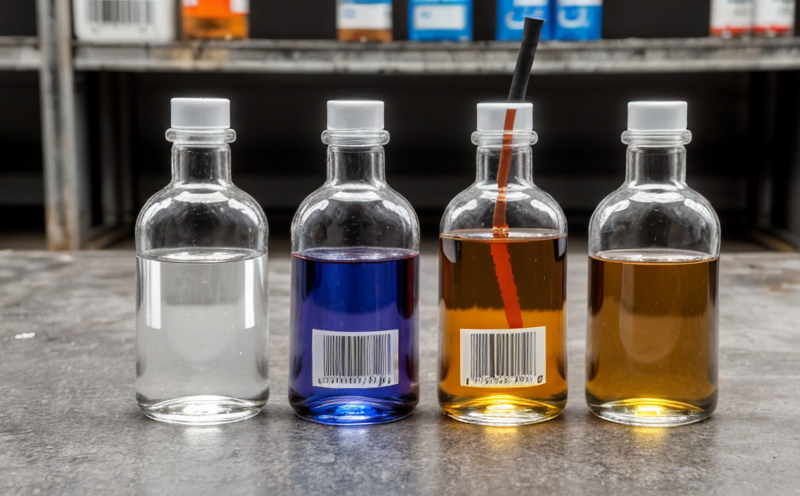ASTM D5229 Moisture Stability Testing of Polymer Composites
The ASTM D5229 standard provides a robust framework for evaluating the moisture stability of polymer composites. This test method is essential in ensuring that materials are resilient to environmental changes, particularly humidity and water exposure, which can significantly impact product performance over time. The test involves exposing specimens of polymer composites to controlled humidity levels followed by accelerated aging under specific conditions.
The primary goal of ASTM D5229 is to determine the resistance of polymer composites against moisture-induced degradation. This includes assessing changes in physical properties such as tensile strength, modulus, and elongation at break. By simulating real-world environmental conditions, this test helps predict long-term performance and durability.
The methodology involves several key steps. Specimens are prepared according to ASTM D5229 specifications, ensuring uniformity across samples. These specimens are then exposed to varying humidity levels for extended periods. Following exposure, the materials undergo accelerated aging processes designed to simulate years of actual use in a condensed timeframe. Key measurements include mass change, color change, and mechanical property evaluation.
The importance of ASTM D5229 cannot be overstated. It plays a critical role in ensuring product integrity, especially for applications where exposure to moisture is inevitable or frequent. By adhering to this standard, manufacturers can enhance the reliability and longevity of their products, reducing maintenance costs and extending service life.
Understanding the nuances of ASTM D5229 is vital for anyone involved in quality management, compliance oversight, R&D engineering, and procurement within industries such as aerospace, automotive, construction, and consumer goods. Mastery of this test method allows stakeholders to make informed decisions about material selection and process optimization, ultimately leading to superior product performance.
The ASTM D5229 protocol is widely recognized for its precision and reliability in assessing the moisture resistance of polymer composites. Compliance with these standards ensures that products meet stringent industry requirements and consumer expectations.
Scope and Methodology
The scope of ASTM D5229 focuses on determining the moisture stability of polymer composites through accelerated aging techniques under controlled humidity conditions. This test is particularly relevant for materials used in environments where exposure to moisture is expected, such as outdoor applications or high-humidity manufacturing processes.
| Test Specimens | Environmental Conditions | Measurement Parameters |
|---|---|---|
| Polymer composites of various types and compositions | Controlled humidity levels, temperature variations | Mass change, color change, mechanical property evaluation |
The methodology begins with specimen preparation. Samples are cut into standard sizes and shapes to ensure consistency across the test batch. Following this, specimens are exposed to varying humidity conditions for a specified duration. Once exposure is complete, they undergo accelerated aging in an environmental chamber set at specific temperature and relative humidity levels.
Post-exposure, key measurements include mass change (percentage difference from initial weight), color change using standardized colorimetric analysis, and mechanical property evaluation. The latter involves assessing tensile strength, modulus, and elongation at break using appropriate testing equipment.
The results of these tests provide valuable insights into the moisture resistance capabilities of polymer composites. This information is crucial for material selection, process optimization, and ensuring product performance under real-world conditions.
Benefits
Avoidance of premature failure due to moisture-related degradation
Enhanced durability and longevity of products in demanding environments
Informed decision-making for material selection and process optimization
Improved compliance with industry standards and regulatory requirements
The benefits extend beyond mere performance enhancement. By adhering to ASTM D5229, manufacturers can build a strong reputation for producing high-quality products that stand the test of time.
Use Cases and Application Examples
Aerospace components subjected to varying humidity levels during manufacturing or in-flight conditions
Automotive parts exposed to road salt and rainwater for extended periods
Construction materials used in outdoor applications where moisture exposure is common
Consumer goods like packaging that needs to maintain integrity in humid environments
The table below highlights specific use cases and application examples:
| Application | Main Challenges | ASTM D5229 Benefits |
|---|---|---|
| Aerospace components | Precise performance in varying humidity conditions | Assures durability and reliability under harsh conditions |
| Automotive parts | Resistance to road salt and rainwater | Enhances longevity and reduces maintenance costs |
| Construction materials | Maintaining integrity in outdoor environments | Achieves compliance with environmental standards |
| Consumer goods | Packaging that must remain intact in humid conditions | Ensures product safety and consumer satisfaction |
The ASTM D5229 test is widely used across various sectors, including aerospace, automotive, construction, and consumer goods. Its application ensures that products meet stringent industry requirements and consumer expectations.





